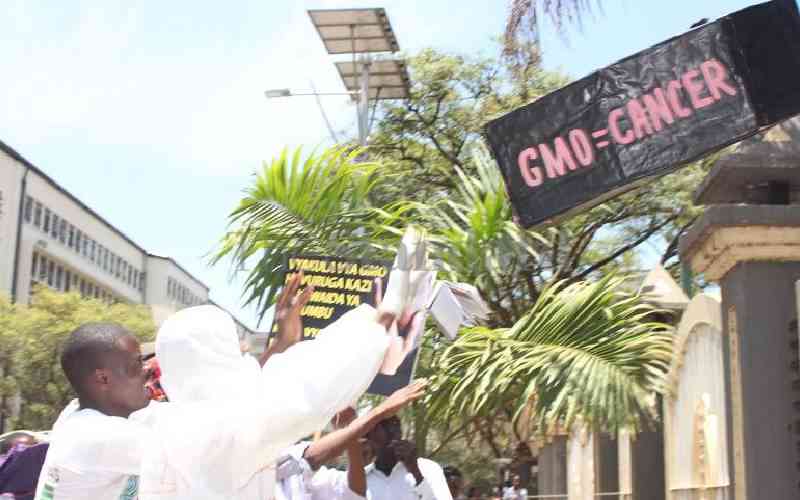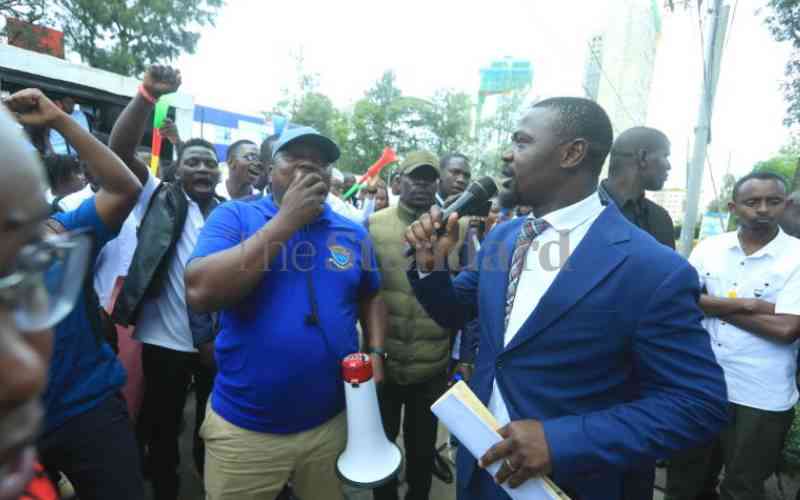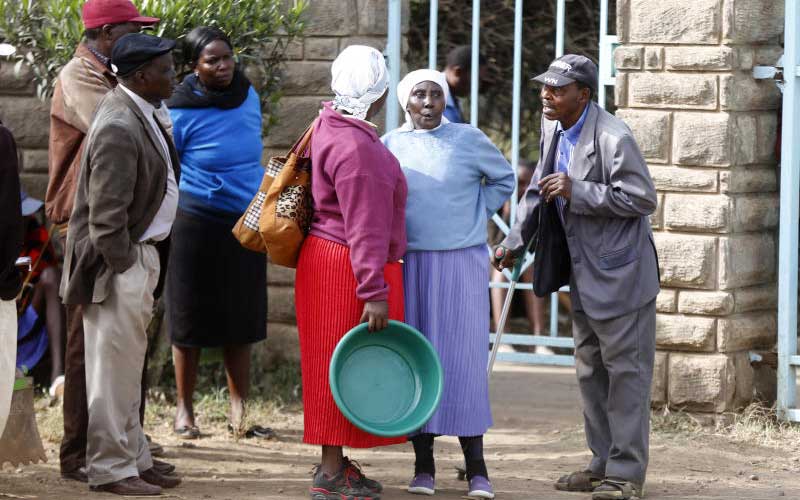
Pope Francis received four disturbing letters from Nairobi in the last three years.
As members of his church here in Kenya battled in court, four desperate letters penned by destitute children, donors and beneficiaries of the Lang’ata based hospital landed in his office in Rome.
The letters sent through the Pope’s secretary were part of efforts from well-wishers who wanted direct intervention from Rome to reign in the wrangles.
One such letter was written by a Mike Murray, who describes himself as the President of Crystal Springs Foundation.
In his letter to Rome, Mr Murray, who lives in Seattle, Washington says he is saddened by how a hospital he has provided Sh120 million plus funding had been “sunk by avarice and pride”.
Other letters were written by Fr Richard Mangini from California and a Kenneth Makokha, an orphan raised through the hospital.
Also in the Pope’s mailbox is a letter from a Ramesh Shah, one of the donors who helped source for land where the hospital in Nairobi sits.
The main theme that ran through these letters was – the irony of priests and nuns fighting over the ownership of a hospital meant to serve the poor. But Rome did not respond, at least not directly to the authors.
However, Pope Francis’ voice on wealth and the church had been growing louder and louder in his sermons.
In his first Saturday sermon this year for instance, Pope Francis preached against making the pursuit of money, a career or success the basis for one’s whole life.
The head of the Catholic Church also asked his congregation to resist “the inclinations toward arrogance, the thirst for power and for riches.”
In a preface to one of his books, Francis who heavily talks against greed and selfish accumulation of wealth writes that he cannot fail to denounce with the Gospel the “personal and social sins committed against God and against the neighbour in the name of the god of money and of power”.
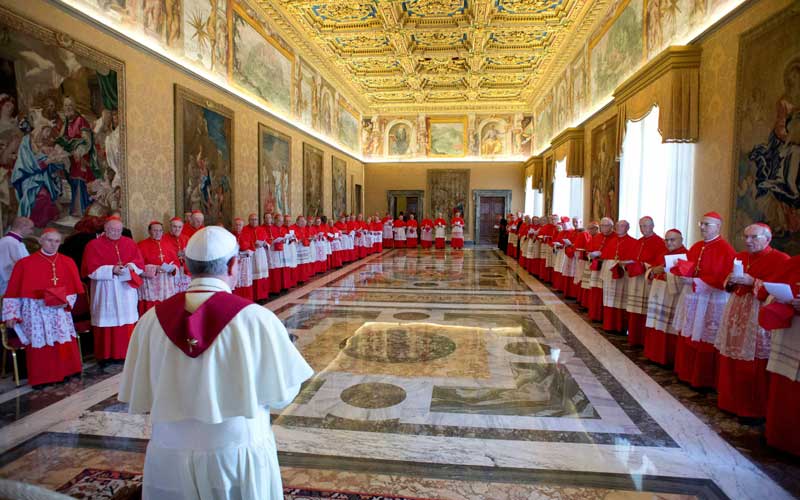
But his sermons are a far cry from the practice of some of his clergy here in Kenya ,if the tragic tale of St Mary’s Mission Hospital is anything to go by.
Sisters’ story
So just who are the Assumption Sisters?
And how did they turn the tables against Dr Fryda, who was once a close confidant, and convince the judge to kick him out?
The Assumption Sisters of Nairobi is an organisation formed by African religious women in the year 1973. It champions its mission to the poor through health services, education and social work. The nuns have projects both here in Kenya and abroad.
Their leader is known as a superior general. The top decision making organ of the group of nuns is a general council, which has four members and the superior general. This council is voted in every six years.
When it was their turn to lay their case before Judge Munyao Sila of the environment and Labour Court in Nakuru, the Assumption Sisters left the judge as confused as he was puzzled on how fickle matters faith can be when push comes to shove.
“I think both parties were not entirely honest on the input that the other had in the initialisation of the hospital. I say this with a heavy heart, given that both parties profess the Christian religion, and are both persons within the church pecking order,” Judge Munyao would observe having assessed the evidence and testimonies from both parties.
Their version of the story is as far different as is Fryda’s.
Between 1992 and 2002, the superior general was Sister Maria Felix Mwikali and she was succeeded by Sister Marie Theresa Gacambi.
Sister Gacambi was one of the original shareholders of St Mary’s Mission Hospital Company, which was supposed to be the legal entity that would own the hospital.
Gacambi knew Dr William Fryda, the main protagonist in the feud, in 1998 when she served as the deputy to the superior general. The nuns told the court that the American priest was only to assist them to build and manage the hospital, and being a missionary, he would move on. That is why all the parcels were registered in their name, she said.

The first spanner in the works that destroyed Dr Fryda’s case was her move to point out that he had an option to register the land in his own name or that of his congregation, the Maryknoll Fathers and Brothers from New York, USA.
For them, the idea of setting up a hospital was as a result of a meeting between them, Fryda and the Superior General of the Maryknoll catholic congregation.
They say although the idea was a collaborative effort, it was agreed that they would be the legal owners of the hospital and would be responsible for its running.
The funds used to buy the land and develop the hospitals, according to them, was provided by donors who they helped find. Dr Fryda, they argued, raised the money for the project having received a letter from Ndingi Mwana a’Nzeki, the then archbishop of Nairobi.
The nuns formed the company of St Mary’s Mission Hospital to run the facility. They developed a hospital manual that allowed Dr Fryda to be the doctor in charge. But ultimate responsibility lay with the superior general.
Sister Gacambi said Dr Fryda was the only signatory of the accounts, including a project account, an optimum interest account and a dollar account.
Differences cropped up when Dr Fryda proposed a different manual and proposed a different way forward for the hospitals, one of which was to have the title deeds returned, and the properties transferred to a new ownership authority.
Gacambi claimed that sisters were ejected from the hospitals in the most inhumane way.
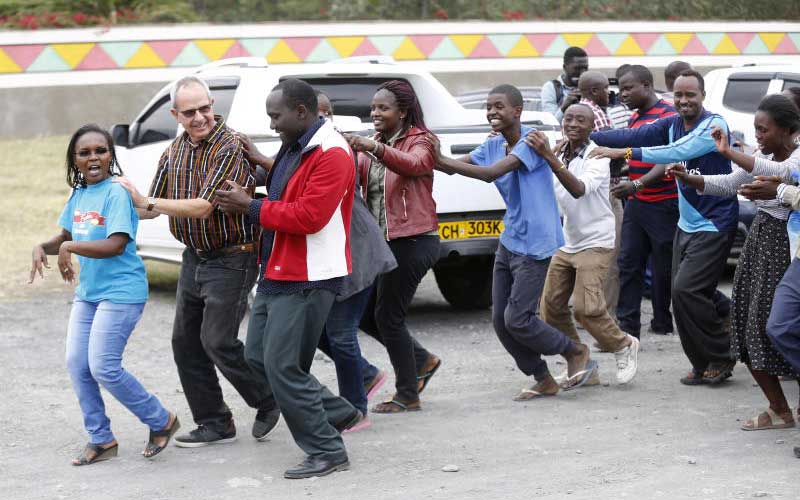
She denied that Assumption Sisters did not contribute to the hospital projects. She said their initial contribution was Sh5.6million. But court records did not capture any other amounts contributed by the nuns out of the Sh1 billion or so used to buy land and build the hospitals.
Their other contribution was not monetary. They helped develop the idea and in finding donors for the project. Being the CEO of the hospital, she said Dr Fryda was allowed to prepare plans and contracts.
She did not agree that it was Dr Fryda who contacted donors for funds, and asserted that the original letters seeking the funds were written by Sister Mwikali, the then superior general.
“Dr Fryda would report on the progress of the construction and seek authority from ASN to pay the contractor if the payment was beyond a certain ceiling,” Gacambi said in her testimony. But she did not know the ceiling. She did not know whether Assumption Sisters ever met the contractor. But work was completed and the hospital in Nairobi was opened in 2000 while the one in Elementaita opened its doors in 2007.
They say their move to oust Fryda was because the goodwill that existed between them before had expired. And that it was time for the missionary priest to pack his bags and go.
Nuns say they authorised Fryda to solicit funds from donors in their name. But they say Fryda had failed to disclose and account for the operation of bank accounts of the hospital.
To puncture Dr Fryda’s evidence, the nuns brought Father Lance Nadeau, a member of Maryknoll Fathers, where Dr Fryda belonged. At the time Father Lance testified, he was the financial officer for Africa. He is the priest who wrote the letter suspending Dr Fryda when the fight spilled to the courts. They would revoke his work permit and order him to leave the country.
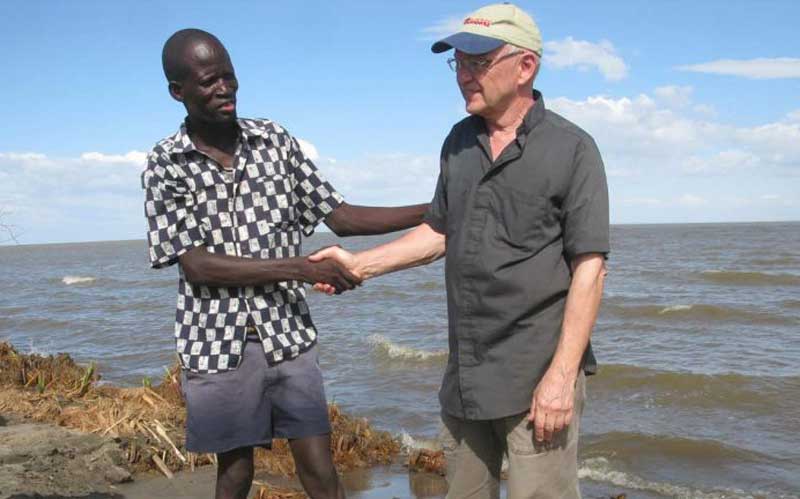
He accused Fryda of causing a public scandal by filing the suit. He would later dismiss Fryda who appealed the decision in Rome. He testified that Maryknoll raised Sh490 milllion ($4.9million) for the project.
“He testified that he has never come across a situation where a member of Maryknoll itself owns a project. He explained that if he got money to build a school, he will not own the school but will turn it over to the local church,” the judgement reads in part.
When Fryda’s lawyer stood up, he introduced the hidden hand angle of Cardinal John Njue, the fourth archbishop of Nairobi, in the fight.
“He hinted at a hidden hand of Cardinal Njue in the matter and attempt to have the property transferred to the university against the wishes of the donors,” court papers read.
The biggest question he raised was how Fryda had suddenly become a trespasser after being at the suit properties for 11 years.
In their prayers, the nuns asked the judge to issue a permanent injunction to restrain Dr Fryda or his agents and servants from entering the hospitals.
They also wanted to stop him from soliciting funds on behalf of the hospital and to stop him from dealing in funds held in six bank accounts of the hospital.
The nuns asked the judge to compel Dr Fryda to sign bank forms for change of signatories of the six accounts.
When he delivered his judgement, Justice Munyao noted that although there may be a canon law, but here in Kenya, the constitution was supreme. He noted that the interventions by the Catholic Church may not have been “sincere and impartial”.
“It is not right in my view to destroy somebody’s life for the reason only that they have opted to pursue their rights in court,” he ruled. He had eleven questions to answer.
Who conceptualized the hospitals? Who built them and where did the money come from? What was the relationship between Dr Fryda and the nuns? Are the properties held in trust for Dr Fryda?
The other questions he had to answer was just under what form of ownership does ASN hold the suit properties? Who should manage the hospitals in issue? When he was done looking at these questions, he noted that it does not matter who raised more money than who.
“From the evidence that I have, most money was raised through the personal efforts of Dr Fryda, who must have walked his soles off, to ensure sufficient funds were raised to make this project a reality,” he ruled.
“I doubt ASN, at that time, would have raised enough money to develop a hospital of this magnitude,” he said adding that if the nuns had sufficient money on their own, they would not have needed the input of Dr Fryda and they would simply have gone it alone.
“I actually find it detestable, if not immoral, in the manner in which ASN witnesses tried in their evidence, to belittle the significant input that Dr Fryda made,” he said.
The scales turned against Dr Fryda when the question of the legal ownership of the properties was answered.
The shocker for Fryda however came when the evidence did not support the claim that the properties and hospitals were held in his trust. This was the end game.
The judge ruled that despite his input, he had relinquished the outcome of his efforts to the Assumption Sisters. He had also written to the Kenya Revenue Authority (KRA) at one time when seeking tax exemptions for the hospitals that they were being managed by the nuns.
From this, the judge handed over the properties to the nuns.
“I ask the parties to take more out of the judgment. They should sit back, reflect on all that they have gone through, assess what they have achieved together, forget the bitter fights in and outside court, embrace each other, and push forward with one mission, that of developing the best healthcare for the poor in the Kenyan society,” the judge pleaded.
This advice fell on deaf ears and the nuns would hear none of it. After they got the orders, they did not hesitate to kick Fryda out.

When we visited St Mary’s hospital in Lang’ata this week, no photography was allowed.
Journalists were no longer welcome. Perhaps to allow the hospital to heal, and rebuild. Its gate had a fresh coat of paint. But it was not the same. Guards on duty said the hospital was turning away patients on emergencies to Kenyatta National Hospital (KNH).
Staff who remained still get paid, though a little late. The long queues that characterised the hospital have disappeared.
Nuns won the case. But at too great a cost to the project.
Part One of the St Mary’s Saga: Where Dr Fryda gives his side of the story how greed for money killed his dream, can be read HERE
 The Standard Group Plc is a multi-media organization with investments in media platforms spanning newspaper print
operations, television, radio broadcasting, digital and online services. The Standard Group is recognized as a
leading multi-media house in Kenya with a key influence in matters of national and international interest.
The Standard Group Plc is a multi-media organization with investments in media platforms spanning newspaper print
operations, television, radio broadcasting, digital and online services. The Standard Group is recognized as a
leading multi-media house in Kenya with a key influence in matters of national and international interest.









